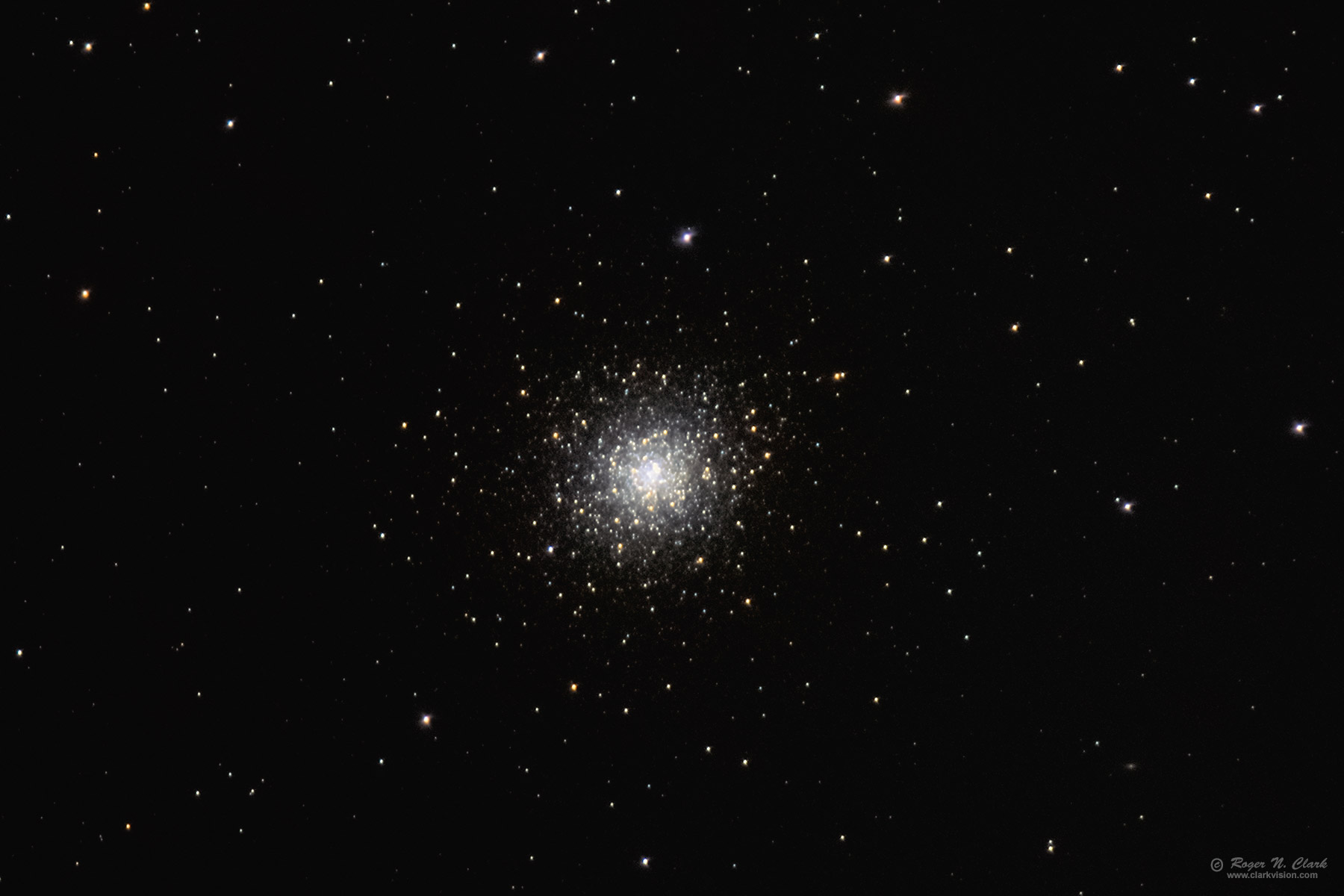| Home | Galleries | Articles | Reviews | Best Gear | New | About | Contact | Gallery Index | Previous |
Next |

| Home | Galleries | Articles | Reviews | Best Gear | New | About | Contact | Gallery Index | Previous |
Next |

The M92 Globular Cluster is a beautiful site in mid-sized amateur telescopes (e.g. about 8-inches in aperture). M92 is about 27,000 light years away, with an estimated age of about 11 to 14 million years. Photometry of the starts in M92 show that the color index is similar to our Sun and yellower/redder. No blue stars were reported by Mészáros et al., Astrophysical Journal, v137, p. 4282, 2009.
There is a small faint galaxy at the lower right, PGC 59984, magnitude 15. It is at about the 4 o'clock position from M92 and to the upper left at about 11 o'clock from the copyright symbol.
Technical. This image was obtained with a stock Canon EOS 90D DSLR Camera and Canon 300 mm f/2.8 L IS II lens. plus a Canon 2x teleconverter giving 600 mm at f/5.6. Total exposure time was 49.25 minutes. Exposures were 15 seconds at ISO 1600, and 197 exposures were made. Post processing: raw conversion with Photoshop ACR stacking with deep sky stacker, Stretched with rnc-color-stretch, Richardson-Lucy deconvolution in ImagesPlus and final adjustments in photoshop. No darks, no flats, no bias frames (flat field is in the ACR lens profile and corrected during raw conversion). The exposures were tracked on an iOptron HAE29EC strain-wave mount with high resolution encoders and no guiding. The image was obtained in the Denver metro area, Bortle 7 sky. Faintest stars are about magnitude 18.
Original plate scale is 1.1 arc-seconds/pixel and this image is shown at full resolution.
This is a natural color image.
The Exposure Factors, CEF, CEFA are measures of the relative amounts of light received from a subject. It can be used to fairly compare wildly different lens/telescope apertures and exposure times. For this image on the sky:
Modern digital cameras like the Canon 90D include on sensor dark current suppression technology and low fixed pattern noise at ISOs around 800 and higher, making no need for dark frame subtraction. Modern raw converters correct for light fall-off and also correct for hot/dead/stuck pixels. This makes processing low light images easy: simply align and average.
Keywords to this image = astrophoto-1 star_cluster Messier digital_astro canon_90d rnc-color-stretch
Image ID: m92-600mm-rnclark.c06.26.2023.IMG_5731-932-av197c2-e-1800s.jpg
| Home | Galleries | Articles | Reviews | Best Gear | Science | New | About | Contact |
Last updated April 02, 2025